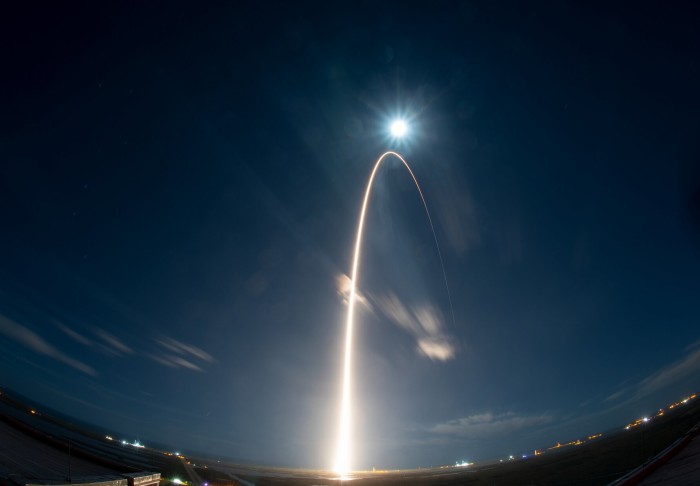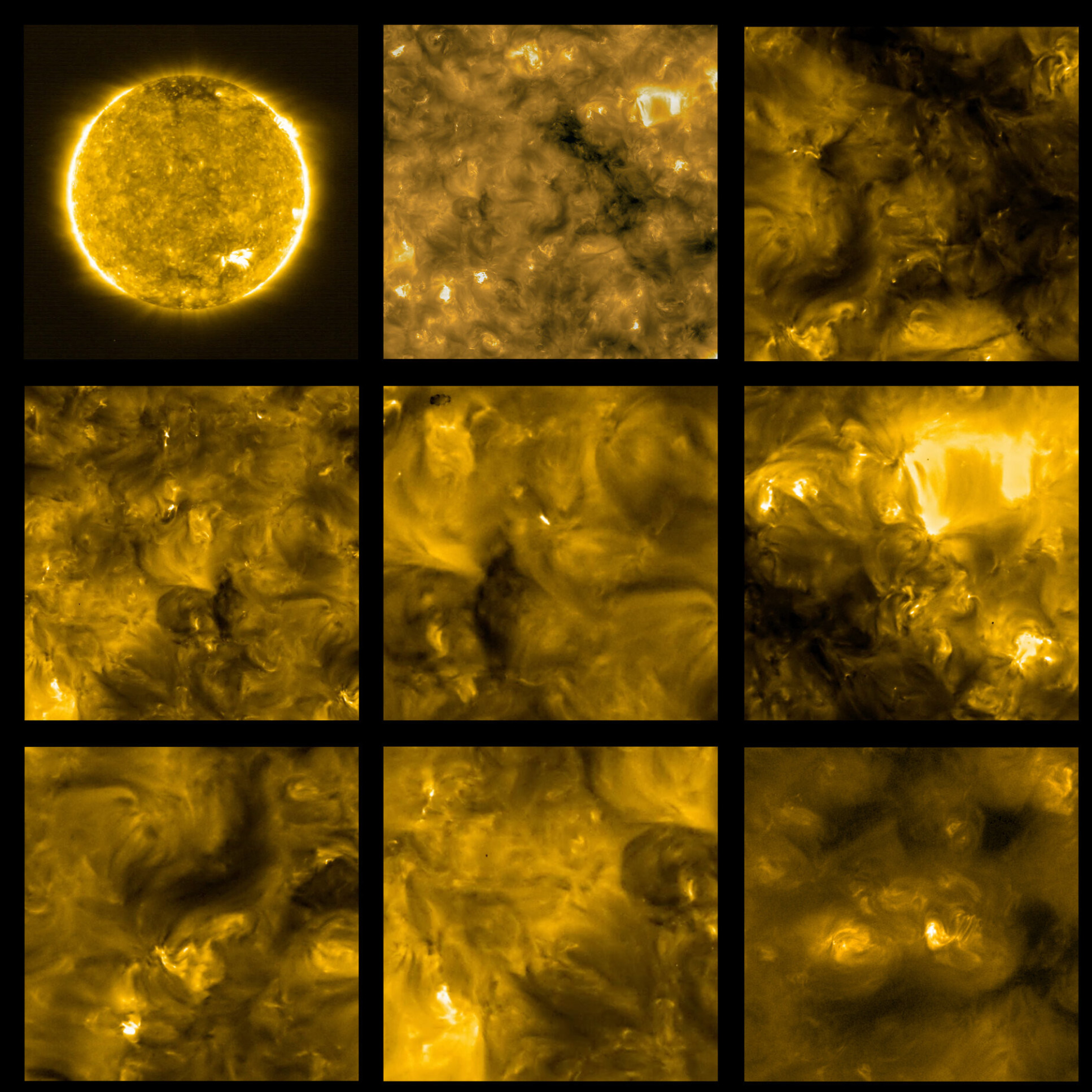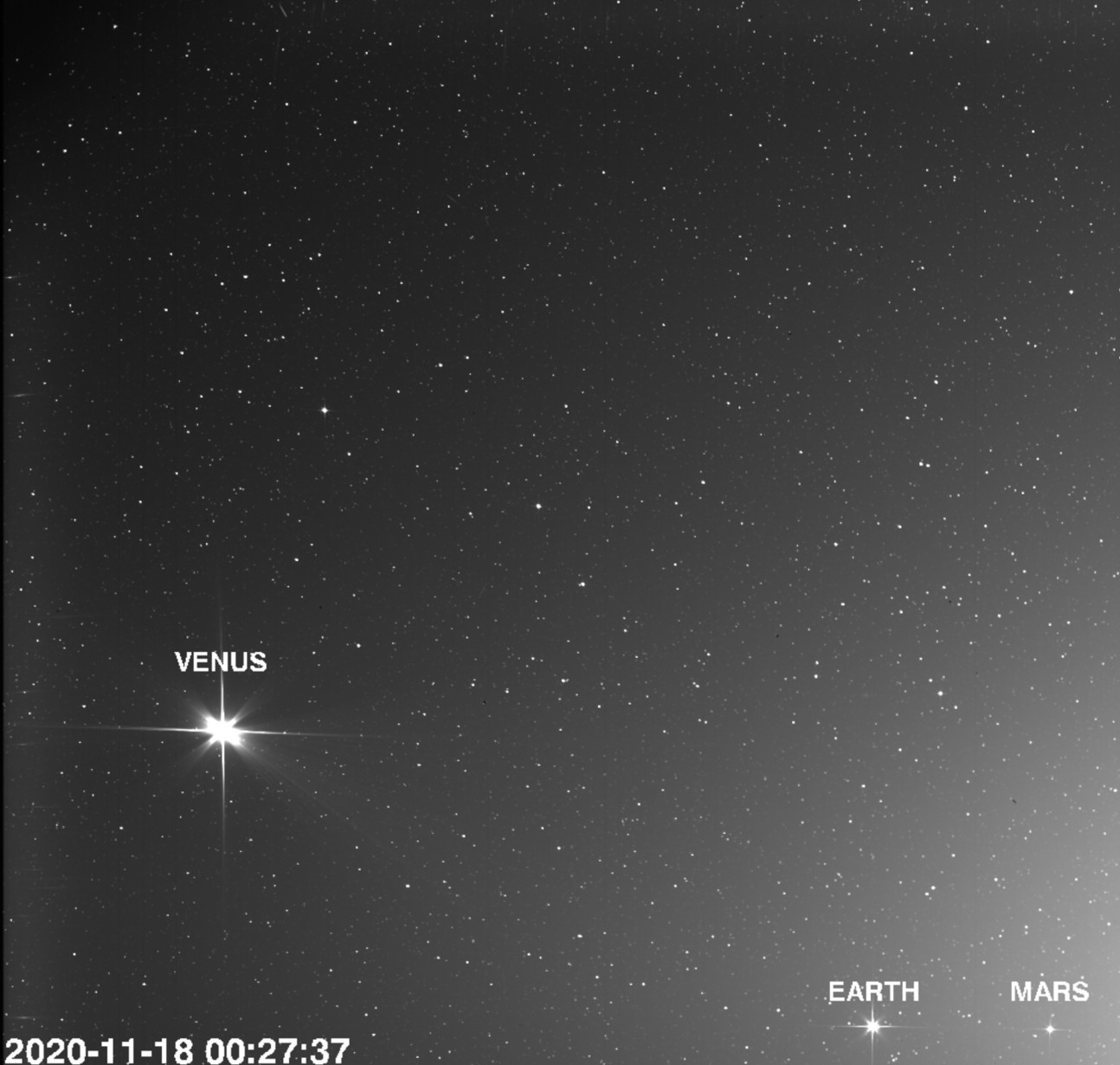
Solar Orbiter launching

Imperial’s magnetometer instrument aboard the Solar Orbiter spacecraft has seen a successful and eventful first year in space.
Since the spacecraft launched on 10 February 2020, the magnetometer (MAG) has taken billions of measurements of the magnetic field coming from the Sun, revealing new insights into the solar wind and how it creates ‘space weather’.
After spending over ten years designing and building the instrument, it is fabulous to be getting all this data back, revealing the secrets of the solar wind. Helen O'Brien
MAG was designed and built at Imperial College London and it is one of ten state-of-the-art instruments travelling towards the Sun on board Solar Orbiter. To find out more about the mission and MAG, watch an introduction video or browse our in-depth feature.
We caught up with members of the MAG team from Imperial’s Department of Physics to review Solar Orbiter’s first year in space and look forward to its future.
Professor Tim Horbury, Principal Investigator for MAG, said: “It’s been such a difficult year for everyone, but while Solar Orbiter has certainly kept us very busy, and the team have done an amazing job keeping everything running while working from home, it’s also been fantastic to see all their hard work over the last ten years finally pay off. The quality of the data coming back from the instrument is outstanding.”
Helen O’Brien, Instrument Manager for MAG, said: “MAG has done everything we have asked of it and more. After spending over ten years designing and building the instrument, it is fabulous to be getting all this data back, revealing the secrets of the solar wind.”
Beautiful launch
Professor Horbury and O’Brien both attended the launch at Cape Canaveral in Florida, capturing their reactions and excitement in the video diaries below.
Video editing by Mariana Kneppers
Talking to an instrument millions of kilometres away
MAG was the first instrument to turn on, and just one week after launch the team were able to see from the data it sent that it was working “far better than expected”. Just three days after launch it sent down its first science data representing magnetic measurements in the solar wind.
The solar wind fills the solar system with charged particles and the Sun’s magnetic field, which can interact with the Earth’s magnetic field. This can cause issues for power grids and electronics on Earth, as well as satellites and astronauts in space.
Over the four months following launch, the spacecraft and its instruments underwent a phase of technical verification, known as commissioning. During this time the COVID-19 pandemic took hold, but despite not having access to campus since mid-March, the Imperial team received more than two billion scientific measurements from over 100 days of data-taking.
MAG data received as the boom carrying the instrument unfolded
MAG Calibration Engineer Virginia Angelini said: “Every morning we receive an email with the principal information about the magnetometer. The message has a list of parameters, such as the temperatures and currents of its parts, and when we read them and we verify that there are no problems, it is like the instrument is telling us ‘Good morning team, I’m OK! The data will arrive soon!’ That is a very happy moment.
“We are literally conversing with an instrument on a probe travelling at several kilometres per second, millions of kilometres away from us, watching the Sun from a privileged position. I believe this is amazing.”
Closest-ever images of a quiet Sun
The spacecraft’s first major discovery was announced in July, with the release of the closest-ever images of the Sun. These revealed what appear to be ubiquitous miniature solar flares, dubbed ‘campfires’.
The images were taken from around 77 million kilometres from the star, about half of the distance from the Earth to the Sun. The spacecraft will get still closer over the next few years, until it gets as close as 42 million kilometres, inside the orbit of Mercury.
The ‘campfire’ flares may solve a longstanding mystery about our star: why its outer atmosphere is hotter than its surface. The mini flares could also help scientists understand the dynamics of larger flares that can affect electronics and communications networks on Earth.

At this time, the MAG data was already revealing lots of activity from the Sun, including shockwaves, coronal mass ejections, phenomena called ‘switchbacks’ and fine-scale waves in the magnetic field that the team only able to see thanks to the extreme sensitivity of the instrument.
The first batch of this data was released in September, which revealed the state of the Sun in a ‘quiet’ phase. The Sun follows an 11-year cycle of sunspot activity and is currently almost completely free of sunspots. This is expected to change over the coming years as sunspot activity ramps up, causing the Sun to become more active and raising the chances of adverse ‘space weather’ events.
Despite this, the team were able to see a surprising degree of structure on the solar wind, with MAG confirming the presence of ‘switchbacks’ – dramatic folds in the solar wind first recorded by the Parker Solar Probe, a NASA mission launched in 2018.
A long, eventful journey to the Sun
Solar Orbiter was due to serendipitously fly through the twin tails of Comet ATLAS this year, and though the comet unfortunately disintegrated before the spacecraft reached it, the instruments were still able to pick up some interesting signals, which are now being analysed.
These include signatures of electromagnetic waves, which are likely generated by the interaction of ions coming from comet ATLAS with the solar wind. The spacecraft also gathered data from a coronal mass ejection – a huge eruption of material from the Sun – that occurred in April, and will provide valuable information about these extreme events.
 The spacecraft ended 2020 by flying by Venus and taking images of Earth, Mars, Venus and Uranus in the same frame.
The spacecraft ended 2020 by flying by Venus and taking images of Earth, Mars, Venus and Uranus in the same frame.
Solar Orbiter has seen a lot already, and will get progressively closer to the Sun over its ten-year mission, exploring all aspects of the environment around our nearest star.
O’Brien said: “Right now we are going through our second closest approach to the Sun, and this time the spacecraft is round the other side of the Sun so we can’t communicate with it. It’s the first time the spacecraft has been left to its own devices for so long, so it an exciting time.
“I’m looking forward to the Venus and Earth fly-bys later this year, and the official start of science operations where we will really get to see the instruments all working together to investigate the Sun up close.”
Professor Horbury added: “We’re already seeing hundreds of scientists engage with the data – there is huge excitement in the community about Solar Orbiter. It’s a decade-long mission, but we’ve seen so much in just the first year that I can’t wait to see what new, totally unexpected results come from exploring space close to the Sun.”
Supporters

Article text (excluding photos or graphics) © Imperial College London.
Photos and graphics subject to third party copyright used with permission or © Imperial College London.
Reporter
Hayley Dunning
Communications Division

Contact details
Tel: +44 (0)20 7594 2412
Email: h.dunning@imperial.ac.uk
Show all stories by this author





Leave a comment
Your comment may be published, displaying your name as you provide it, unless you request otherwise. Your contact details will never be published.